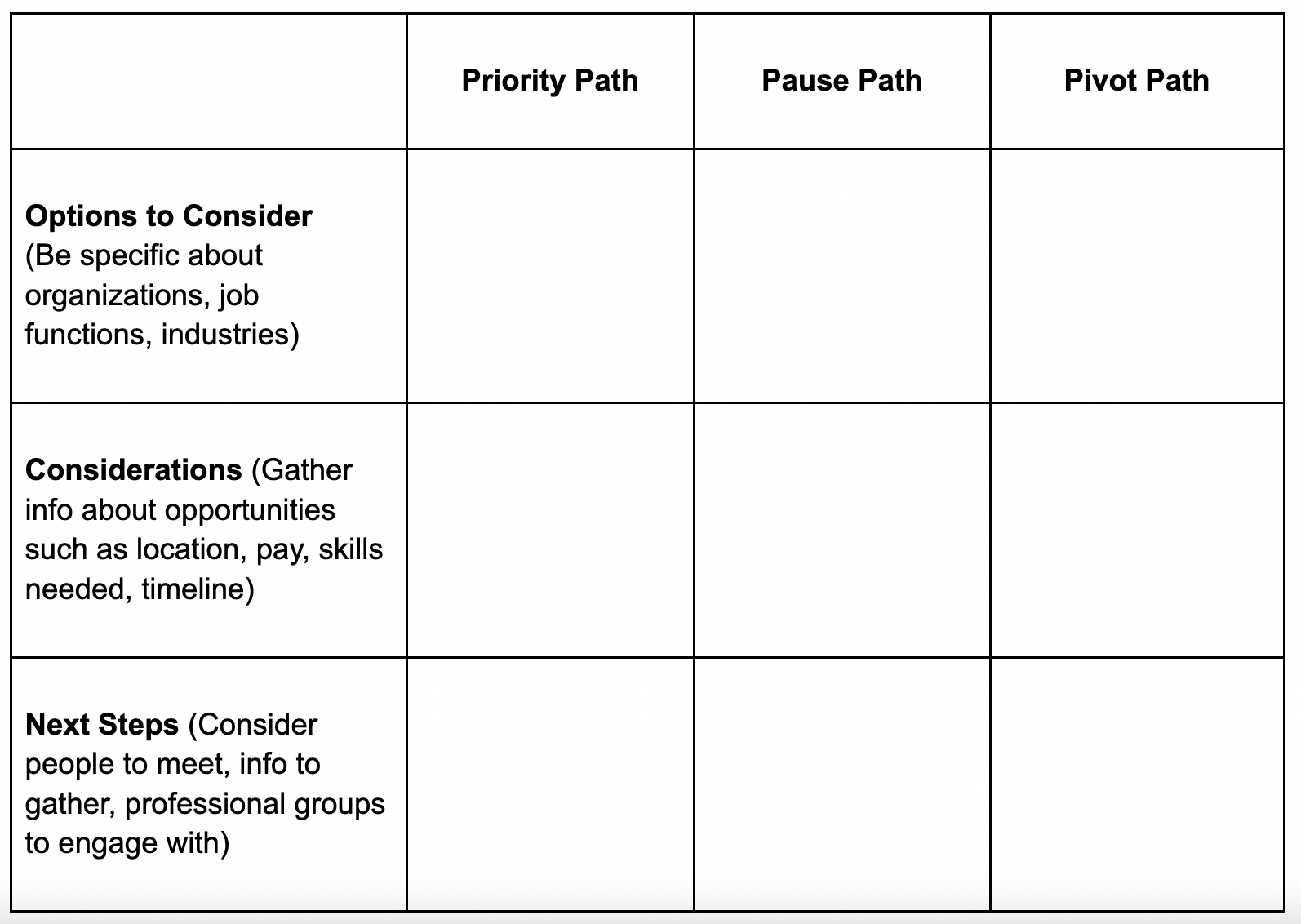Personal Scenario Planning: Navigating Uncertainty in Your Career
We are currently experiencing seismic shifts that make many areas of social impact work challenging. On an almost daily basis, I have a conversation with someone who is grappling with uncertainty in their work and livelihood. From nonprofit leaders who are facing major cuts to their funding, to coaching clients impacted by federal government layoffs, to friends across various industries that are navigating economic uncertainty from this administration's policies.
Consistent phrases I am hearing are:
"I'm not sure if I'm going to have a job next year."
"I think this job search will take much longer than job searches in the past."
And from consultants, I'm hearing "This is the slowest period of work I have experienced since I started my own business."
As a leadership coach and consultant, I have supported organizations with scenario planning and developing strategic options to approach a VUCA environment (see my recent post about VUCA). Some great scenario planning resources I recommend are the Strategy Triage Tool (created by Marian Urquilla at the Center for Community Investment, I used this with my team during the pandemic) and this article from the Nonprofit Risk Management Center.
It's important to acknowledge that many scenarios in this environment mean that programs could be cut, organizations may be shut, and people will lose their jobs. This is already happening. What makes this moment particularly challenging is the double impact: not only are social safety net programs that support vulnerable communities being dismantled, but the nonprofit jobs that implement these vital services are simultaneously disappearing. So let’s talk about how to prepare as an individual and do scenario planning for yourself.
Why Scenario Planning Helps Individuals
Scenario planning isn't about predicting the future; it's about preparing for multiple possible futures. This approach acknowledges reality while maintaining agency over your professional journey.
The 3 Ps Scenario Framework
I recommend mapping out three distinct scenarios for your career path:
1. Priority Path: Your Preferred Scenario
When to consider this path:
Your current role or industry remains stable and resourced
Your skills continue to be in demand
Your organization remains aligned with your career goals
Political and economic factors don't significantly disrupt your work
What this path involves:
Continuing in your current role or getting a promotion
Securing a new job in your current career track
Obtaining funding or resources for priority projects
Growing your team or influence in your area of work
For this scenario, outline concrete steps toward your goals, key relationships to nurture, and skills to develop that will position you for success.
2. Pause Path: The Temporary Holding Pattern
When to consider this path:
Funding for your work becomes restricted, but that is likely temporary
A change in leadership has shifted organizational priorities
Political headwinds make your work more challenging now but that may shift in future election cycles
Your industry is experiencing a short-term contraction
What this path involves:
Identifying alternative projects or responsibilities that still build relevant skills
Exploring consulting or interim work that keeps you employed while the landscape shifts
Finding ways to maintain key relationships and visibility
Using this time for professional development that will serve your long-term goals
Preserving your resources (financial, emotional, and professional) until conditions improve
The pause scenario requires patience and strategic thinking. It's not about giving up but about finding ways to hold your ground while preparing for better opportunities.
3. Pivot Path: The Strategic Redirection
When to consider this path:
Your industry experiences significant contraction
Political or economic shifts make your work no longer viable
Technology makes your job function no longer relevant
You recognize that your current path isn't sustainable for personal reasons
What this path involves:
Identifying transferable skills that open doors to adjacent fields
Exploring industries and regions with growth potential that value your expertise
Considering entrepreneurial opportunities or consulting roles
Investing in new credentials or experiences that facilitate transition
Leveraging your network to explore completely new directions
The key to a successful pivot is proactive planning and having a financial runway before it becomes a necessity.
Implementing Your Scenario Plan
Once you've defined your three scenarios, consider these implementation steps:
Identify options and next steps. Use the chart below to identify options, considerations, and potential next steps for each of the paths.
Set decision points. Identify specific indicators that would signal the need to shift from one scenario to another.
Share selectively. Discuss your planning with trusted mentors who can provide feedback and support.
Review regularly. Revisit your scenarios every few months to refine them based on changing conditions.
Build financial flexibility. Create financial buffers that give you the freedom to make strategic choices rather than reactive decisions.
Final Thoughts
Scenario planning isn't about pessimism—it's about empowerment. By acknowledging uncertainty and preparing for multiple outcomes, you maintain agency over your professional journey. The most successful professionals I've coached aren't those who avoided disruption, but those who anticipated possibilities and positioned themselves to respond nimbly to changing circumstances.
What scenarios are you planning for right now? I'd love to hear your thoughts in the comments or DM me.

